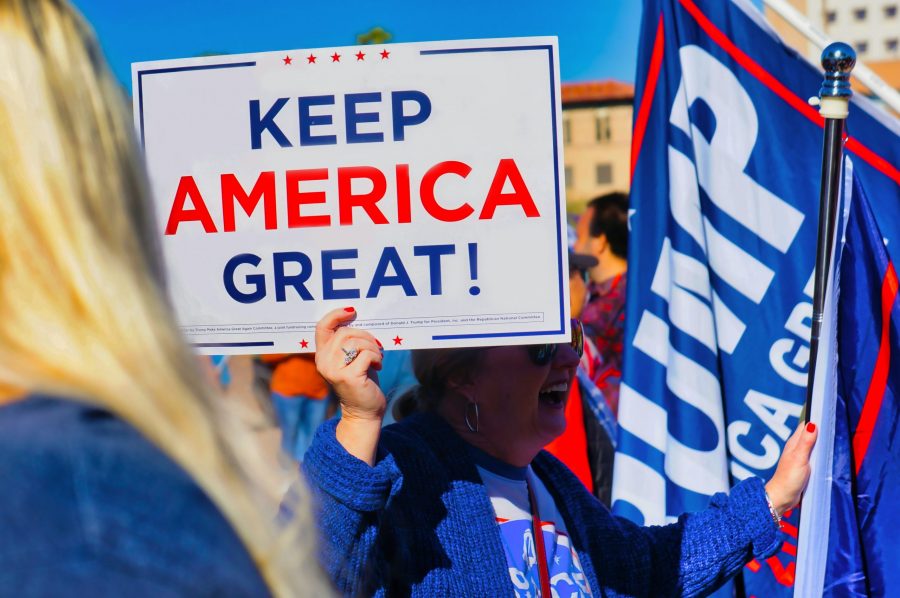If democracy is one of the vital organs of the American Dream, then that dream flatlined on Wednesday.
In one of the darkest moments of American political history, protestors – who have been labelled by some as domestic terrorists – stormed the US Capitol Building with the aim of disrupting the Presidential Confirmation Hearing held in a joint session of Congress.
With the dust now beginning to settle, calm has – for the most part – been restored.
At around 8:35am GMT on Thursday, Joe Biden was confirmed as the 46th President of the United States.
However, it has not come without loss.
These protests have seen four people die, 14 police officers injured, and countless White House officials resign in disgust.
Running through this madness is unmistakeable streak of orange.
While no doubt remaining a martyr to those who attacked the seat of American democracy, Donald Trump is tarnishing what little dignity he had left with vast swathes of the country’s electorate.
But what got us here, and more importantly, can America recover from a black day in its history?
“Let’s have trial by combat”
One need not look far to find the short-term causes of yesterday’s attacks. At a well-attended ‘Save America’ rally, Trump whipped thousands of ardent – and armed – supporters into a frenzy.
Repeating the unsubstantiated claims of electoral fraud which have seemingly been playing on repeat since his election defeat in November, Trump said:
“These people are not going to take it any longer.
“You don’t concede when there is theft involved.
“After this, we’re going to walk down – and I’ll be there with you — to the Capitol.”
The president’s lawyer, Rudy Giuliani, added, “Let there be trial by combat.” Giuliani has seen 62 lawsuits filed by the Trump campaign since the election defeat thrown out.
As the protestors marched two miles from the White House to the Capitol, the mood turned sour.
Those inside the building were evacuated from the two chambers and locked down as protestors overcame the meagre security detail in place. It took police four hours to regain full control of the building.
Trump, meanwhile, sat back and seemed to beam with pride about the actions of his supporters.
While Joe Biden pleaded for him to “demand an end to this siege”, Trump responded with a half-hearted plea on his now-locked Twitter account.
Preaching the same gospel that the election had been stolen, Trump called the protestors “special”, saying “we love you”, and adding the protestors should go home not because they were committing gross acts of criminality, but because it would play into the hands of the Democrats.
To preach peace long after protestors had stormed the seat of American democracy was a feeble attempt to close the barn door after the horse had bolted.
Politicians from across the American political spectrum and the world have since condemned the president’s repeated willingness to incite, and fail to truly condemn, such violence.
A symbolism of the American divide
In a long-term context, Wednesday’s events are a manifestation of a continued process of polarisation in American politics which have grown deeper particularly over the past four years.
Amid the chaos of Wednesday’s events, a haunting video surfaced on Twitter showing a woman who had been shot.
Those who came to her aid were unable to see that the bullet had hit her in the neck, due to the Trump flag tied around it.
While strikingly sad in of itself, it is a symbolisation of the blind damage that Trump’s populist political firebrand continues to wreak on American democracy.
Trump’s political career has been hallmarked by a failure to bridge the vast ideological gaps between the various sections of American society.
He has form of being reluctant to criticise white supremacists, while conversely deploying the National Guard to protect Capitol Hill during peaceful Black Lives Matter protests last summer.
All of this and more has further entrenched an already-strong sense of tribalism within US politics.
Bipartisanship has been replaced with belligerence, which has been actively encouraged by the outgoing president and at times has been enough to shut down the American political system.
Behind the gaffes, fake tan and political incorrectness, there is a politician who has knowingly fanned division for years.
The recent election only provided more ammunition for this to continue, and to retain Trump’s sense that he can still pull strings in Washington long after he is gone.
Whether he truly believes he unfairly lost the election or not is anyone’s guess, but while this view carries weight – which it does with dangerous consequences – the US will continue to be marred by this inability to cooperate.
Speaking to the BBC in November, former president Barack Obama blamed right-wing media outlets for fanning divisions, and whose “business model is premised on fanning a certain kind of anger, resentment, a certain story about how people who are not like us are taking advantage of us, and we have to fight back.”
“That kind of lack of fidelity to the truth has consequences when it’s being promoted by the most powerful elected official in the country.”
This “truth decay”, as Obama called it, would take more than one election to fix.
The truth is, that for his former Vice-President, and now-President Elect Biden, the challenge facing his administration is stark.
The debacle on Capitol Hill cut short celebrations of the Democrats’ hard-earned success in Georgia’s two Senate races.
By giving Democrats control of both legislative houses, there is hope that real change can be achieved in at least the first two years of the new presidency.
It offers hope of rare political unity at a time when Biden’s country is more divided than it has been for many a year.
Whether the new administration will be able to heal these blatant divides remains to be seen. But for the sake of American democracy, something needs to change.
By Callum Parke

